Related Research Articles

Finlandia, Op. 26, is a tone poem by the Finnish composer Jean Sibelius. It was written in 1899 and revised in 1900. The piece was composed for the Press Celebrations of 1899, a covert protest against increasing censorship from the Russian Empire, and was the last of seven pieces performed as an accompaniment to a tableau depicting episodes from Finnish history. The premiere was on 2 July 1900 in Helsinki with the Helsinki Philharmonic Society conducted by Robert Kajanus. A typical performance takes between 7½ and 9 minutes depending on how it is performed.
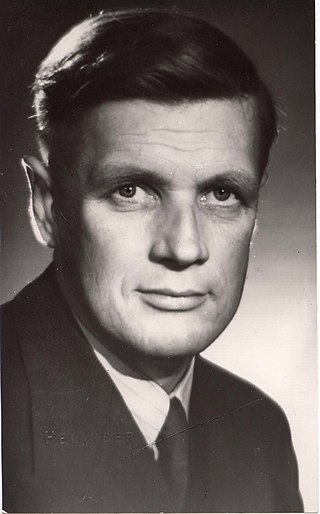
Uuno (Kalervo) Klami was a Finnish composer of the modern period. He is widely recognized as one of the most significant Finnish composers to emerge from the generation that followed Jean Sibelius.
The Tempest, Symphonic Fantasia after Shakespeare, Op. 18, is a symphonic poem in F minor by Pyotr Ilyich Tchaikovsky composed in 1873. It was premiered in December 1873, conducted by Nikolai Rubinstein.

Karelia Suite, Op. 11 is a subset of pieces from the longer Karelia Music written by Jean Sibelius in 1893 for the Viipuri Students' Association and premiered, with Sibelius conducting, at the Imperial Alexander University in Helsinki, Grand Duchy of Finland, on 23 November of that year. Sibelius first conducted the shorter Suite ten days later; it remains one of his most popular works.
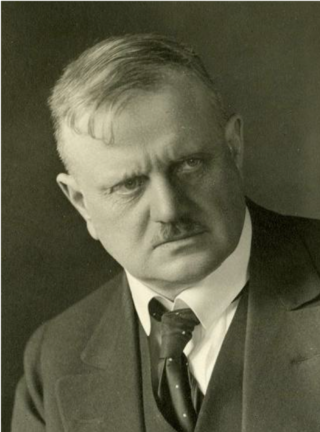
The Oceanides, Op. 73, is a single-movement tone poem for orchestra written from 1913 to 1914 by the Finnish composer Jean Sibelius. The piece, which refers to the nymphs in Greek mythology who inhabited the Mediterranean Sea, premiered on 4 June 1914 at the Norfolk Music Festival in Connecticut with Sibelius conducting. Praised upon its premiere as "the finest evocation of the sea ... ever ... produced in music", the tone poem, in D major, consists of two subjects, said to represent the playful activity of the nymphs and the majesty of the ocean, respectively. Sibelius gradually develops this material over three informal stages: first, a placid ocean; second, a gathering storm; and third, a thunderous wave-crash climax. As the tempest subsides, a final chord sounds, symbolizing the mighty power and limitless expanse of the sea.
The Tempest is an opera by English composer Thomas Adès with a libretto in English by Meredith Oakes based on the play The Tempest by William Shakespeare.

The Tempest incidental music, Op. 1, is a set of movements for Shakespeare's play composed by Arthur Sullivan in 1861 and expanded in 1862. This was Sullivan's first major composition, and its success quickly brought him to the attention of the musical establishment in England.
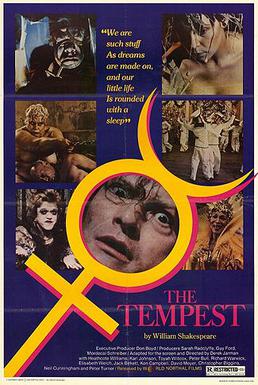
The Tempest is a 1979 film adaptation of William Shakespeare's play of the same name. Directed by Derek Jarman, produced by Don Boyd, with Heathcote Williams as Prospero, it also stars Toyah Willcox, Jack Birkett, Karl Johnson and Helen Wellington-Lloyd from Jarman's previous feature, Jubilee (1977).
Selected discography of recordings conducted by Thomas Beecham:

Lilli Katriina Paasikivi-Ilves is the artistic director of the Finnish National Opera since 2013 and a mezzo-soprano.

Ariel is a spirit who appears in William Shakespeare's play The Tempest. Ariel is bound to serve the magician Prospero, who rescued him from the tree in which he was imprisoned by Sycorax, the witch who previously inhabited the island. Prospero greets disobedience with a reminder that he saved Ariel from Sycorax's spells, and with promises to grant Ariel his freedom. Ariel is Prospero's eyes and ears throughout the play, using his magical abilities to cause the tempest in Act One which gives the play its name, and to foil other characters' plots to bring down their master.
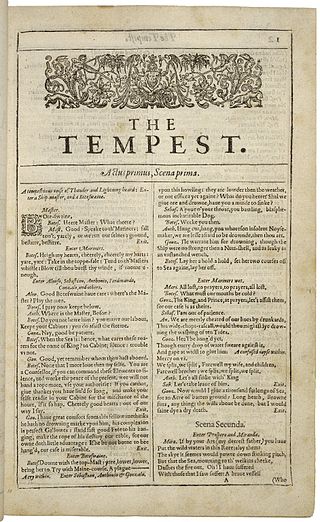
The Tempest is a play by William Shakespeare, probably written in 1610–1611, and thought to be one of the last plays that he wrote alone. After the first scene, which takes place on a ship at sea during a tempest, the rest of the story is set on a remote island, where Prospero, a complex and contradictory character, lives with his daughter Miranda, and his two servants: Caliban, a savage monster figure, and Ariel, an airy spirit. The play contains music and songs that evoke the spirit of enchantment on the island. It explores many themes, including magic, betrayal, revenge, and family. In Act IV, a wedding masque serves as a play-within-a-play, and contributes spectacle, allegory, and elevated language.

Belshazzar's Feast, JS 48, is incidental music by Jean Sibelius to a play of the same name by the journalist, poet and playwright Hjalmar Fredrik Eugen Procopé (1868−1927).

The Wood Nymph, Op. 15, is a programmatic tone poem for orchestra composed in 1894 and 1895 by the Finnish composer Jean Sibelius. The ballade, which premiered on 17 April 1895 in Helsinki, Finland, with Sibelius conducting, follows the Swedish writer Viktor Rydberg's 1882 poem of the same title, in which a young man, Björn, wanders into the forest and is seduced and driven to despair by a skogsrå, or wood nymph. Organizationally, the tone poem consists of four informal sections, each of which corresponds to one of the poem's four stanzas and evokes the mood of a particular episode: first, heroic vigor; second, frenetic activity; third, sensual love; and fourth, inconsolable grief.

Everyman, Op. 83, is a theatre score—comprising 16 numbers—for soloists, mixed choir, orchestra, piano, and organ by the Finnish composer Jean Sibelius; he wrote the music in 1916 to accompany a Finnish-language production of the Austrian author Hugo von Hofmannsthal's 1911 play of the same name.
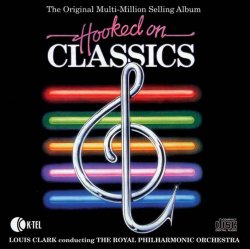
Hooked on Classics, produced by Jeff Jarratt and Don Reedman, is a multi-million selling album recorded by Louis Clark and the Royal Philharmonic Orchestra, published in 1981 by K-tel and distributed by RCA Records, part of the Hooked on Classics series.

Rakastava, Op. 14, is a suite by Jean Sibelius. He completed it in 1912, scored for string orchestra, percussion and triangle. He based it on his earlier composition of the same title, a song cycle of four movements for men's chorus a cappella completed in 1894. The works are based on a Finnish text in Book 1 of the Kanteletar.

The Breaking of the Ice on the Oulu River, Op. 30, is a composition by Jean Sibelius, an "improvisation for narrator, men's chorus and orchestra". Sibelius composed it in 1899 on a poem by Zachris Topelius, a Swedish-language Finnish poet, who had dedicated it to Tsar Alexander II of Russia, thus escaping censorship. The piece was an "explicit protest composition" against a Russia restricting the autonomy of the Grand Duchy of Finland. Sibelius wrote it for a lottery of the Savonian-Karelian Students' Association, where he conducted the first performance on 21 October 1899.

Väinämöinen's Song, Op. 110, is a single-movement, patriotic cantata for mixed choir and orchestra written in 1926 by the Finnish composer Jean Sibelius. The piece, which is a setting of Runo XLIII of the Kalevala, Finland's national epic, is chronologically the final of Sibelius's nine orchestral cantatas; in particular, it belongs to the series of four "little known, but beautiful" cantatas from the composer's mature period that also includes My Own Land, Song of the Earth, and Hymn of the Earth. Väinämöinen's Song premiered on 28 June 1926 in Sortavala, Finland.
References
- ↑ Julie Sanders (2007). Shakespeare and Music: Afterlives and Borrowings. Cambridge: Polity Press. p. 36. ISBN 9780745657653.
- ↑ Sibelius, Jean (2005). Dagbok, 1909-1944. Helsingfors: Bokförlaget Atlantis/Svenska litteratursällskapet i Finland. p. 328. ISBN 91-7353-096-4.
- ↑ "Sibelius: The Tempest (Complete) / Vanska, Lahti So". ArkivMusic. Archived from the original on 3 October 2015. Retrieved 6 December 2015.
